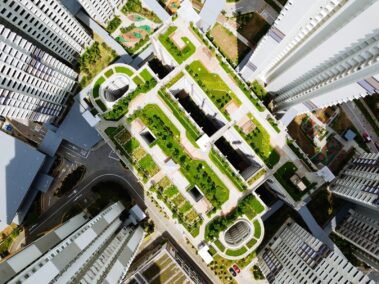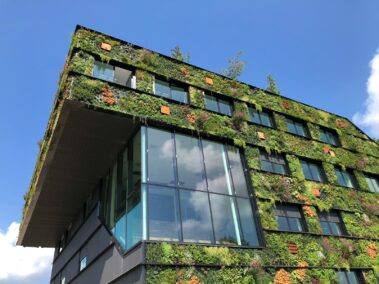The Role of Policy Frameworks in Green Building Practices
Introduction to Green Building and Its Importance
Policy frameworks and incentives for green building are essential for promoting sustainable development. Green building practices involve designing and constructing buildings that minimize environmental impact and maximize energy efficiency. In countries like Saudi Arabia and the UAE, robust policy frameworks are driving the adoption of green building practices. By setting clear guidelines and standards, these frameworks ensure that new constructions meet high sustainability criteria, contributing to the global effort to combat climate change.
Building Codes: Setting the Standard for Sustainability
Building codes are a fundamental component of policy frameworks for green building. These codes establish minimum requirements for energy efficiency, water conservation, and material sustainability. In Saudi Arabia, the Saudi Building Code includes provisions for energy conservation and environmental protection, ensuring that new buildings contribute to the nation’s sustainability goals. Similarly, Dubai’s Green Building Regulations and Specifications set stringent standards for energy and water use, promoting sustainable construction practices across the emirate. These codes are crucial for standardizing green building practices and ensuring compliance with environmental objectives.
Energy Performance Standards: Driving Efficiency and Innovation
Energy performance standards play a pivotal role in enhancing the efficiency of buildings. These standards define the energy performance levels that buildings must achieve, encouraging the adoption of energy-efficient technologies and practices. In the UAE, the Estidama Pearl Rating System sets rigorous energy performance criteria for buildings, incentivizing the use of advanced technologies to reduce energy consumption. In Riyadh, energy performance standards are integrated into building codes, fostering innovation in building design and construction. By setting high benchmarks, these standards drive continuous improvement in energy efficiency and sustainability.
The Impact of Financial Incentives on Green Building Adoption
Introduction to Financial Incentives for Green Building
Financial incentives are powerful tools for promoting the adoption of green building practices. These incentives can take various forms, including tax credits, grants, and low-interest loans. In Saudi Arabia and the UAE, governments are implementing financial incentive programs to encourage developers and homeowners to invest in green building technologies. By reducing the financial barriers to sustainable construction, these incentives play a crucial role in accelerating the transition to a greener built environment.
Tax Credits and Grants: Reducing the Cost of Green Building
Tax credits and grants are among the most effective financial incentives for green building. These incentives provide direct financial support to offset the higher initial costs associated with sustainable construction. In Dubai, the Green Building Incentive Program offers financial incentives for developers who meet specific green building criteria. Similarly, in Saudi Arabia, the government provides tax credits for investments in renewable energy and energy-efficient technologies. These financial benefits make green building more accessible and attractive to developers, driving wider adoption of sustainable practices.
Low-Interest Loans: Facilitating Investment in Green Technologies
Low-interest loans are another important financial incentive for green building. These loans provide affordable financing options for developers and homeowners looking to invest in energy-efficient technologies. In the UAE, the Green Finance Initiative offers low-interest loans for projects that incorporate sustainable building practices. In Riyadh, financial institutions are partnering with the government to provide favorable loan terms for green building projects. By making financing more accessible, these loans help overcome one of the major barriers to the adoption of green building practices.
Conclusion
In conclusion, policy frameworks and incentives for green building are essential for promoting sustainable development. Building codes, energy performance standards, and financial incentives play a crucial role in driving the adoption of green building practices in Saudi Arabia and the UAE. These measures ensure that new constructions meet high sustainability criteria, contributing to the global effort to combat climate change. By setting clear guidelines and providing financial support, governments can encourage developers to invest in sustainable technologies and practices, creating a greener built environment.
As the global focus on sustainability intensifies, the role of policy frameworks and financial incentives will become increasingly important. By continuously improving these measures, countries can foster innovation and drive progress in green building practices. The collaborative efforts of governments, businesses, and technology providers are crucial for achieving the ambitious sustainability goals set by nations around the world. By embracing green building practices, we can build a more sustainable and resilient future for all.
Ultimately, the successful implementation of green building practices relies on a combination of strong policy frameworks and effective financial incentives. As countries like Saudi Arabia and the UAE demonstrate, these measures can significantly accelerate the adoption of sustainable construction practices, leading to substantial environmental and economic benefits. By continuing to invest in green building initiatives, we can create a built environment that is not only energy-efficient and environmentally friendly but also supportive of long-term sustainable development goals.
—
#PolicyFrameworks #GreenBuilding #SustainableDevelopment #SaudiArabia #UAE #BuildingCodes #EnergyPerformance #FinancialIncentives #ArtificialIntelligence #Blockchain #TheMetaverse #GenerativeAI #BusinessSuccess #Leadership #ManagementSkills #ProjectManagement























